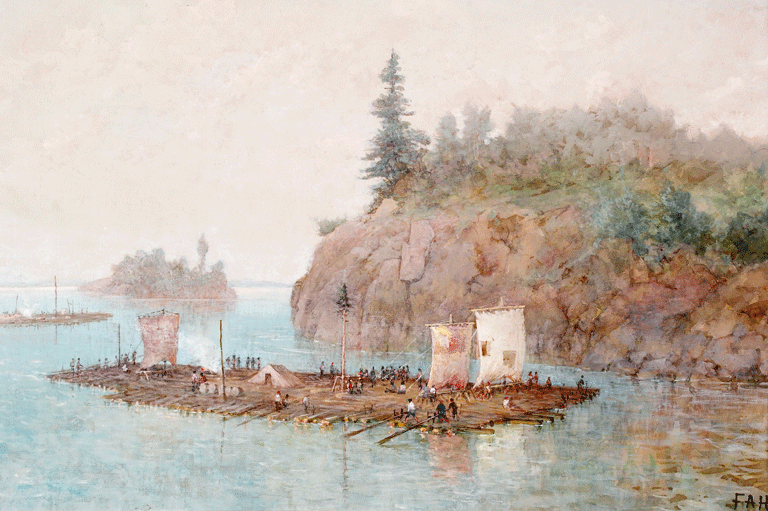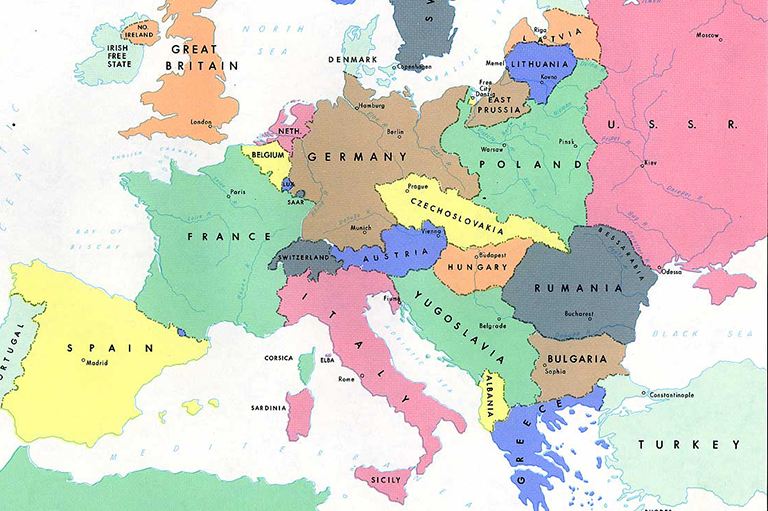Decolonizing a Flag for a New Generation
Grade Levels: 5/6, 7/8
Subject Area: Social Studies, Visual Arts
This lesson is inspired by the article “Flying with Pride” in the Symbols in Canada issue of Kayak: Canada’s History Magazine for Kids.
Lesson Overview
Students will design a new provincial / territorial flag more representative of the post-colonial era.
Time Required
1-2 lessons following exploration of resources
Historical Thinking Concept(s)
- Identify continuity and change
- Take historical perspectives
Learning Outcomes
Student will:
- Examine the provincial and territorial flags of Canada and their descriptions in the “Flying with Pride” article in the Symbols issue of Kayak: Canada’s History Magazine for Kids.
- Assess whether they believe the flags and their symbols need to be updated to reflect a decolonization of familiar Canadian symbols.
- Design an updated provincial or territorial flag; this can include aspects of the original flag, new symbols, or colours.
- Explain their choices based on the concepts of continuity and change and acknowledging different perspectives (i.e. settlers, Indigenous Peoples, first generation Canadians, recent immigrants, etc.) represented in their design.
Background Information
Flags are symbols that represents locations, people, events, etc. Flags were used for messaging (over distances, and in times of war) and for identification. Flags are now also used for marketing. Selecting the symbols to go on a flag is a complicated process that requires an understanding of history and culture, as well as the principles and elements of design.
Lesson Activity
Activating:
- Ask your students to create a Think-Pair-Share or begin a K-W-L chart on what they already know about flags in general.
- Once Think-Pair-Share/Know-Want-to-Know is complete, teacher may choose to use guided discussion to cover some of the different types of flags:
- country, province, city, etc.
- special events like the Olympics, etc.
- special groups such as NATO, the UN, etc.
- social justice (such as Pride, Every Child Matters, etc.)
- when and where flags are flown
- Examine the article “Flying with Pride” and discuss what the symbols represent on each flag. Also discuss what symbols have no explanation (and why that might be).
- Present links to resources (e.g. Canadian Heritage and Government of Canada Publications, Epic Books, and the Canadian Encyclopedia). Provide students with time to explore these resources.
Acquiring:
Discuss and define with your class the following terms:
- Decolonization
- Environment
- Continuity and Change
Based on classroom composition, number of learners, or grade level, determine whether pairs, small group or large group discussions would be most beneficial to the learners. Guide the discussion based on the following Critical Thinking expectations:
- Critical Thinking related to Decolonization:
- How do the symbols on the flags represent settler experiences vs. Indigenous experiences?
- Is there a way to represent both groups?
- Critical Thinking related to Environment:
- How do these symbols represent a new and changing environmental understanding related to climate change?
- Critical Thinking related to Continuity and Change:
- What symbols (if any) continue to represent the province or territory?
- Can symbols be included to represent the experience and representation of new immigrants, new resources, new environmental realities?
- What new symbols or ideas should be included in a re-designed flag?
Ensure students are choosing appropriate images for their re-designed flags. Extra attention should be given to students who wish to incorporate Indigenous imagery to avoid appropriation. Encourage students to explore Indigenous connections within their own community, perform independent research, or discuss with teacher.
Applying:
- Students will design a new provincial or territorial flag using the principles and elements of design and based on their understanding of the province or territory they have chosen. Designs could be created using traditional paper or mixed media or developed using digital design platforms that are accessible to students.
- Students will present their new flag design and explain the symbols they have incorporated into their design.
Materials/Resources
-
Official Symbols of Canada, Government of Canada
-
Symbols of Canada Booklet, Canadian Heritage
-
Our Flag, Ann-Maureen Owens and Jane Yealland
-
"Good" Flag, "Bad" Flag: How to Design a Great Flag, Ted Kaye
-
Provincial and Territorial Emblems, Canadian Encyclopedia
-
National Flag of Canada, Canadian Encyclopedia
-
The Great Flag Debate, Canadian Encyclopedia
-
Canadian Red Ensign, Canadian Encyclopedia
-
Flag of Canada: Alternate Designs, Canadian Encyclopedia
-
Climate Change, Canadian Encyclopedia
-
Environment and Natural Resources, Government of Canada
-
Climate Change, Government of Canada
-
Climate Kids, Government of Canada
- Climate Atlas of Canada
-
Climate Change: The Basics, Climate Atlas of Canada
-
Indigenous Knowledges, Climate Atlas of Canada
- Visual art resources as available
Extension Activity
Once students have designed and presented their flag, they could:
- Defend their choices and act on feedback (both peer and teacher).
- Modify their final design and write a short explanation of their new design.
Themes associated with this article
Advertisement




